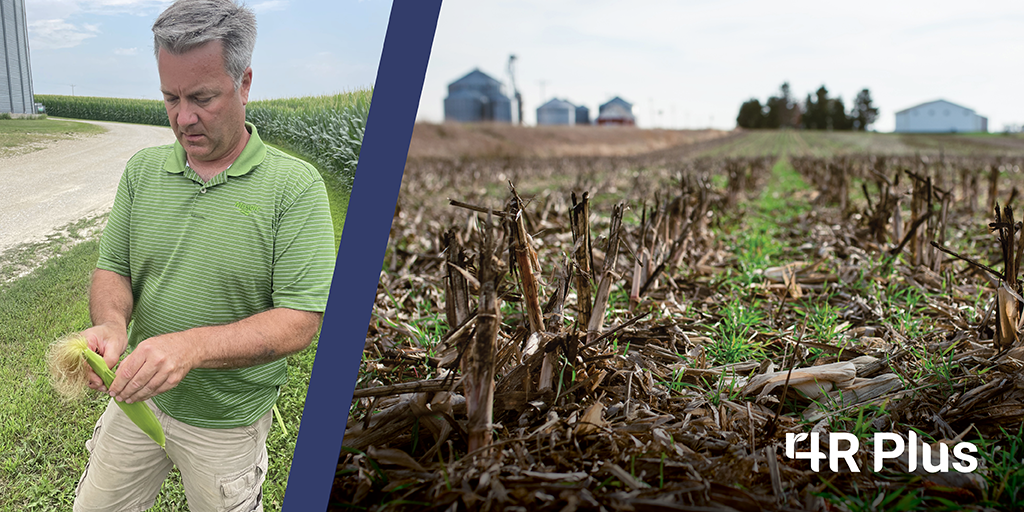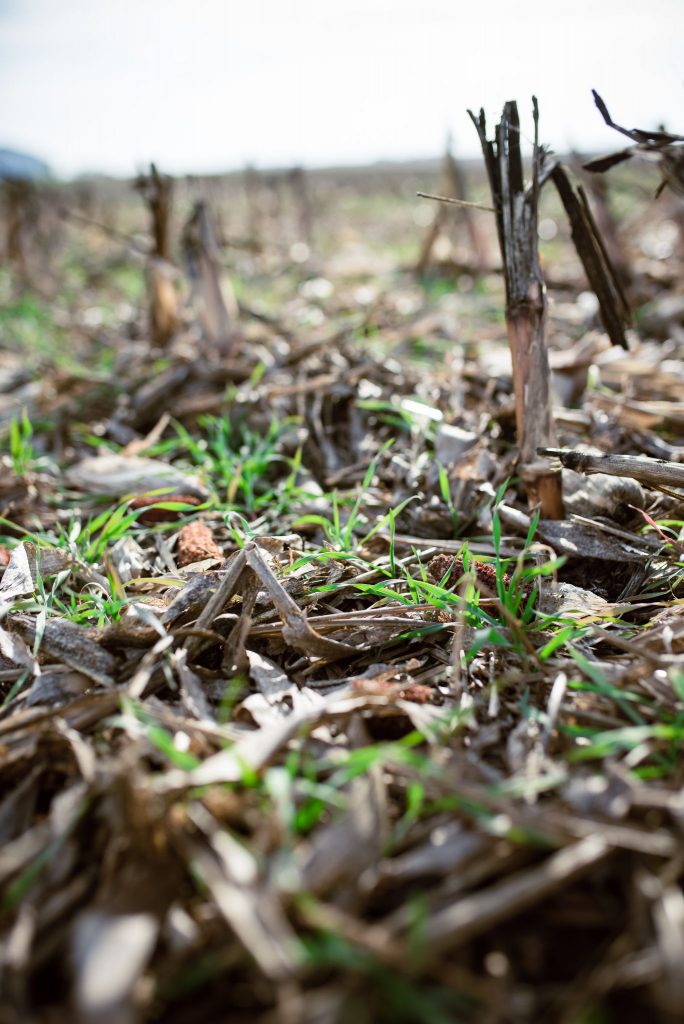
Dale Launstein of Grundy County is reaping the rewards of 4R Plus practices like strip-tilling corn, no-tilling soybeans into cornstalks and planting cover crops on all acres. With 60% of his corn crop harvested as of late October, Launstein was averaging around 245 bushels per acre.
Soybeans were also doing well, with harvest nearly complete and Launstein reporting an average yield of 80 bushels an acre. He waited until rye was hip-high to terminate it for added weed control.
Launstein commented that crops had a good start, roots sank deep, there was plenty of sunshine and the crops caught rains just as they needed them.
Wiggle room on 2022 growing season decisions
Launstein is following the combine with rye cover crops. He had hoped to run a trial on winter camelina for the University of Minnesota but didn’t get the field harvested soon enough. He’s hoping to set the project up for next year and is experimenting by blending in some winter camelina to see how it does with the rye in the meantime.

He’s also applying hog manure this fall but is not in a hurry to lock in planting decisions for the 2022 growing season. He comments that given high fertilizer prices, he might be tempted to reverse his usual two-thirds corn and one-third soybean crop rotation.
The fact he strip-tills and does a late cover-crop burndown in a single pass also gives him flexibility heading into next season when the likelihood of thin input supplies and high prices are giving many farmers heartburn.
Other reasons to consider 4R Plus practices
Working ground makes it more subject to erosion and all the negative implications that entails. But Launstein also points out that doing so is expensive and time consuming. “I don’t like the hood of my tractor that well,” he jokes.
He has seen that big bean yields are possible when using cover crops and no-till. “I think cover crops are a little better every year because you get a little more top end and it makes your roots run down better,” he said.
The longer he uses his 4R Plus system, the less yield variability he notices. “The ability of the soil to hold needed moisture when it’s trending drier or soak it all up when it’s too wet has weatherproofed our farm,” he said. “Crop health is improving and so are yields.”
Cover crops and strip- or no-till also delivers efficiencies, according to Launstein. “Boy, I think it makes life easier. I can get semis in and out of the field. It makes the combine and sprayer run easier; it puts less stress on equipment.”
He also worries that if farmers don’t embrace 4R Plus practices, government involvement and red tape will increase, with Launstein describing the Chesapeake Bay situation as a “warning shot.”
Interest in soil preservation rising in his area
Launstein is happy to report interest in 4R Plus practices is climbing in his area of the state, commenting that one large producer with around 10,000 acres has decided to plant cover crops across all his acres after several years of trials showed rye added an extra 1.5 bushels to 2.0 bushels of beans per acre, paying for itself. “I hope that encourages others to give cover crops and other soil health practices a try,” he said.
For his part, Launstein has been joining forces with others to seed cover crops for neighbors expressing interest. He’s also been serving as a resource for producers as far away as Michigan. “Dip your toe in and you learn a little more every year,” he said.
He’s also had conversations with his landlords about conservation practices, including convincing one of them to put 20 acres of ground along a creek into the Conservation Reserve Program. Many farmers wouldn’t willingly give up 20 acres of ground, but Launstein said the flood-prone ground was costing him money in equipment repairs and especially time.
“The funny thing is, everything I farm now yields better. Our average is up because I don’t have to worry about that flood area,” he said.
Interested in learning more about Launstein’s 4R Plus farming practices? Listen to his interview with Iowa Agribusiness Radio Network.
